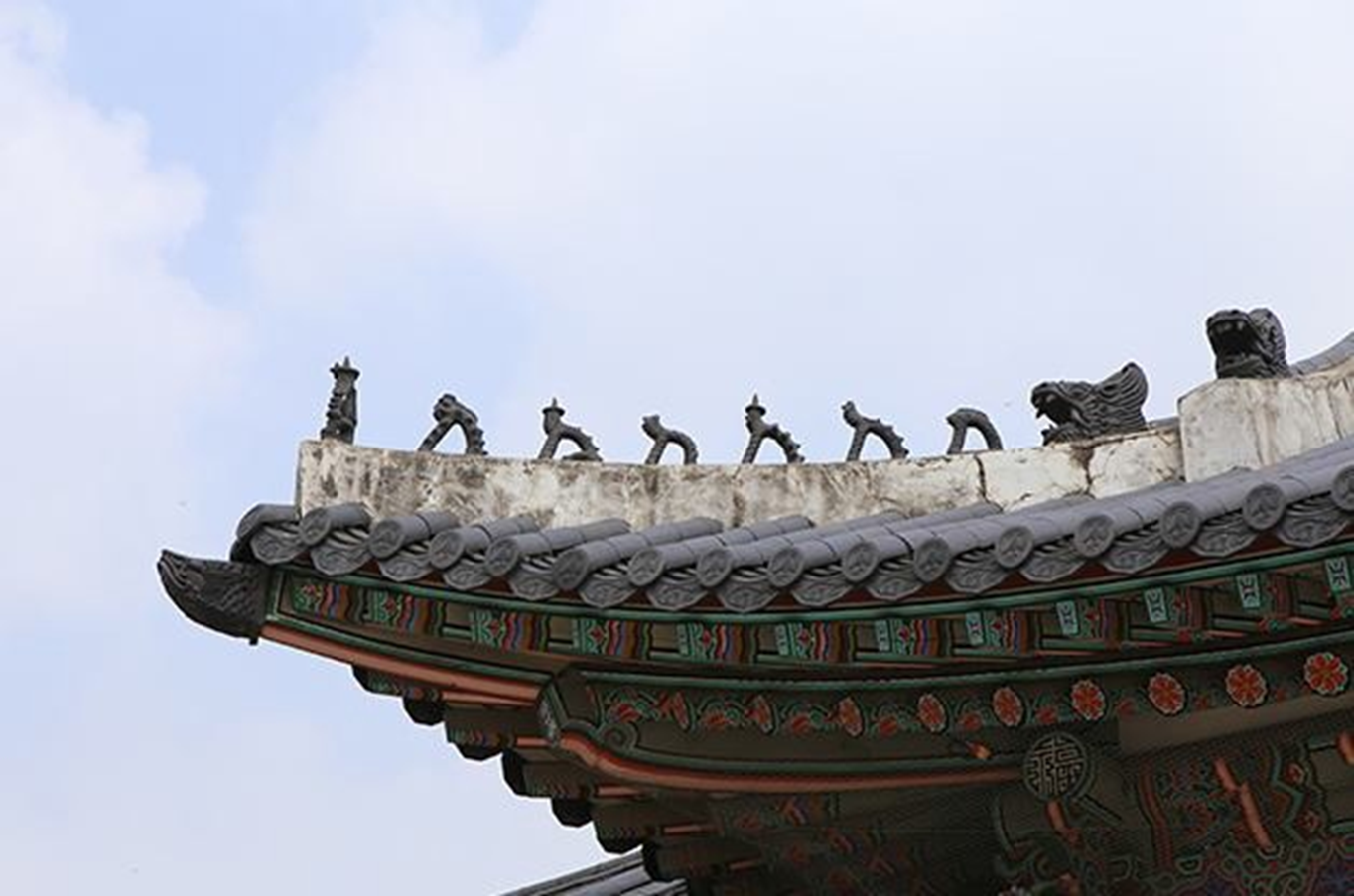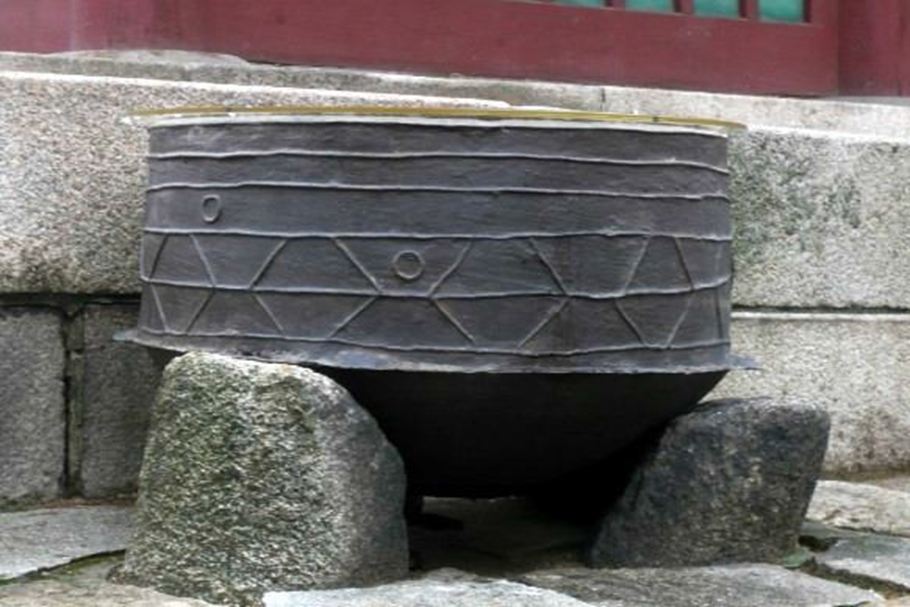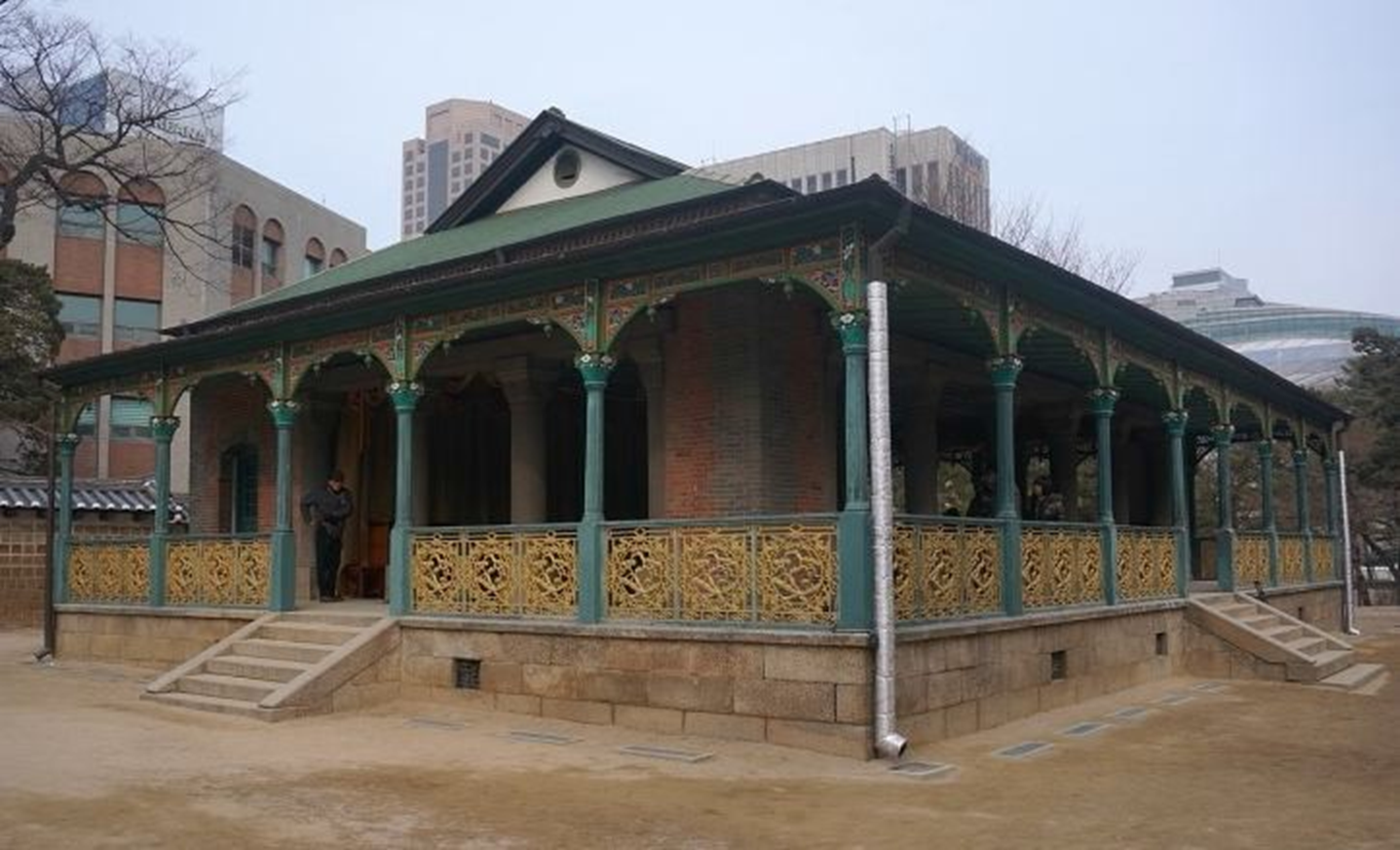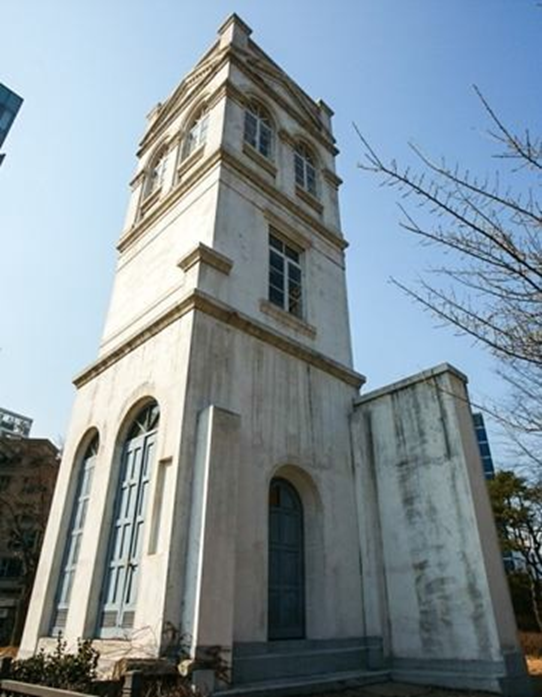Deoksugung Palace
This is one of the five palaces of Korea’s last dynasty, the Joseon Dynasty, which lasted for over 500 years from 1392 until 1910. The dynasty had two critical moments: one the end of the 16th century, and the other at the end of the 19th century. Both of them were related to this palace and to Japanese invasion coincidentally.
In 1592, the Japanese army landed in Busan and marched to the capital, Seoul. Prior to their arrival, King Seonjo fled to Uiju, where he stayed for one and a half years. When he returned to Seoul, he had no place to stay because all of the palaces had been burned down during the war. So, he used this place, which was originally the residence of one of his relative’s families, as a temporary palace.
Prince Gwanghaegun succeeded King Seonjo and then remamed this palce “Hyeongungung Palace”. After he was overthrown by King Injo, it was not used for about 270 years.
Daehanmun’s original name was ‘Daeanmun’ which means ‘May the Nation and People be peaceful’. Its name was changed in 1906 to mean ‘Big Sky’ in a hope that ‘Seoul becomes big’. This is not where Daehanmun was first located. About 33 meters in front of the road was where it was first erected. During the Japanese colonization period, Taepyeongro was expanded and it took up a large part of the east of Deoksugung. There was once when Daehanmun was left alone in the middle of roads when more roads were installed behind Deoksugung’s walls after the 1945 Liberation. There was a main gate for Deoksugung which faced south called Inhwamun. However, when Junghwajeon was being built, Inhwamun was demolished and Daehanmun became a substitute main gate. According to our historical records, the first signboard which said ‘Daeanmun’ was made in 1899 and it was changed to ‘Daehanmun’ in 1906. Deoksugung was initially called Gyeongwungung however, when Emperor Gojong resigned from his Emperorship in 1907 and chose Gyeongwungung as his new residence it was called Deoksugung from then. Therefore, Gyeongwungung and Deoksugung mean the same palace.
Geumcheongyo was a bridge to go across Geumcheon (sacred pool that each royal palace had) and it was also a sign of difference between the King’s Residence and the outside world. Normally a royal palace would have only one Geumcheongyo however, Deoksugung has two Geumcheongyos. Geumcheongyo that was connected to Inhwamun, Deoksugung’s intitial main gate, was destroyed during the expansion of the palace and now only Geumcheongyo that is connected to Daehanmum exists. The destroyed Geumcheongyo was used during the funeral ceremony of Queen Myeongseong. It is believed to have been located where there are holes next to the Rank 4 Pumgyeseok at the Main Quarters of Junghwajeon’s. Every palace had a stone bridge between the main gate and the Throne Hall. This bridge connected the holy area of the king with the common land.
People believed that they could meet the king after cleaning up their mind by the flowing water when they crossed the bridge. There are monster carvings between the arches, which are believed to protect the palace from evil spirits coming from the water.
In addition to the palace itself, there are also Hamabi such as Jongmyo, Seowon, and Seonggyungwan", which means "walk away from high and low, walk all down". Originally it was built outside of Deoksu Palace, but it came in because of road expansion work.
Junghwamun is Deoksugung’s main quarter, Junghwajeon’s main gate. It is an inside door (Naemun) according to the Three Mornings Three Doors rule. It was first built as a two-level building in 1902 however it was lost during the Deoksugung Fire in 1904. Junghwamun was rebuilt in 1906 when Junghwajeon was being rebuilt as a single level building in 1906. You will notice dragons are carved in granite in the foundation of Junghwamun. This is a unique characteristic of Deoksugung as other palaces have phoenixes carved in granite.
Junghwajeon was the most important legal quarter in Deoksugung. Each royal palace has Oejeon (Outside Quarter), Naejeon (Inside Quarter), Donggung (Inside Palace), Huwon (Back Garden), and Gwolnae (Inside Palace Offices). This legal quarter was the center of the Outside Quarter where the Emperor officially met his subjects and greeted important envoys from overseas. It was also a place for ceremonies like a coronation. When King Gojong returned to Gyeongwungung and established the Korean Empire, he used Jeukjodang as the legal quarter and changed its name to Taegeukjeon. However, when his modernization projects were successful, he wanted to show his power more greatly. In 1092 the Emperor built Junghwajeon to show his great powers and authority. The name ‘Junghwajeon’ was also a prayer for the Korean Empire to maintain its independence and peace despite attacks of the Great Powers.
Rank stone is the stones that show the person’s rank. The top-front is the highest and the last one is the lowest. The left row of Junghwajeon is for the Civil officers, and the right row is for the Military officers. This tombstone like stones are ranking stones called Pumgyeseok. These are on each side of Samdo. These ranking stones informs off officials of where to stand according to the status. Civil officers stood on the east and the military officers stood on the west. There are 12 ranking stone on each side.
If you see here, in the middle of the stairs is a path that is different than the ones beside. This was the king’s path and went up riding on a sedan chair, There are two dragons carved here and the meaning of this was hoping the emperor to become a wise leader and to make the world a better place to live. On Junghwajeon‘s dapdo, two dragons are carved. But on Geunjeongjeon's dapdo, two chinese phoenixes are carved.
This colorful part you can see is called Dancheong. Dancheong decorates wooden buildings with patterns of different colors and prevents the wooden buildings from rotting. The patterns were drawn according to a given rule with the colors blue, green, white, red, black and yellow. Blue and green meant the east and means trees and wood. White is the west and means metal. Red is south and means fire. Black is the north and means water. Yellow is the center and means Earth. Not all people could use Dancheong and only palaces and temples could as it. Dancheong symbol is as power, so normal people couldn’t use it.
There are small figures on the roof called “Japsang”” People believed that they protected the building from evil spirits especially fire spirits. Japsang come from the Chinese novel “Journey to the West.” The first is a Buddhist monk, the second is a monkey, and the third is a pig. If you look on the top and end part of the roof, you can see small figures on it. These figures are called Japsang. Japsang comes from the Chinese novel ‘Journey to the west’ and the figures are lined up by character. The book ‘Journey to the west’ was brought by a Buddhist monk in China when that monk went to India and wrote this novel based on India’s Buddhist scriptures. The first statue is the Buddhist monk then monkey, pig, imaginary water ghost and so on.
Now, let’s look inside the Junghwajeon Hall. Can you see the throne between the pillars? Behind it, there is a folding screen featuring the sun, the moon, and five mountains called irwoloakdo. These expressed a wish for the nation, which was ruled by the emperor, to be prosperous forever. It was taken wherever the emperor went. The throne is located in the north center of Junghwajeon hall. It is elevated very high and its back and the armrests are elaborately a domed in an open work technique. The patterns are mostly of dragons, lotus and peony flowers. The three-folded wooden screen behind the throne is also decorated mainly with dragons, lotuses and peonies.
It's the picture behind the throne. It represents the king and follows him everywhere.
Sun means the King, moon means the Queen, 5 peeks mean the land of Joseon, the waves mean the people of Joseon and pine trees mean faithful officers. There was always a folding screen behind the kings of Joseon. The picture drawn has a meaning for every picture. The sun and moon drawn on the top means the king and queen, The negative and positive power which makes up the universe which is the Yin and Yang theory. The five mountains of Korea which means Korea’s land. Pine trees meant loyal and faithful officials and the see means the people of Joseon. Ilwolobyeong shows us the wish to rule the country by confusianism while balancing the power of Yin and Yang.
If you look here, there is a big jar looking thing here. This jar looking thing is called a Deumeu. Deumeu means a big and wide jar in Korean. Deumeu keeps water inside to protect the palace from fire. People believed when the spirit of the fire spirit comes to the palace and reflects itself, it would be surprised by it’s own look and run away.
Completed in 1910, Seokjojeon is a Western-style stone building that housed Gojong’s sleeping quarters and audience hall. It and other Western-style buildings were built as part of the Daehan Empire’s push to modernize. Seokjojeon was built in a neoclassical style with verandas along three sides. Unlike other traditional palace structures, Seokjojeon has king's offices, sleeping room and queen's sleeping room altogather. Living quarters and additional facilities for Gojong were in the basement. The staircase in the front leads to the ground floor, where there is a reception hall and waiting room. On the second floor were the emperor and empress’s bedrooms and other rooms serving various purposes.
If you see on the roof, you can see flowers called oyat During the Daehan empire, the royal family used the oyat flower as a symbol of the royal family a lot. The oyate flower was named by the family name of the royal family which I oyat Lee. However Joseon’s people used this flower shape a lot because this power meant the royal family of Joseon dynasty and this meant that Japn is making Joseon’s power weaker and making Joseon their colony.
It is a place that was used as a place where the Emperor Gojong interviewed the foreign ambassador and processed his business. In 1916, there was a kindergarten for Deokhyeongju, the only daughter of Gojong. The kindergarten was the first kindergarten in Korea at that time as a kindergarten for the education of the children of ongju and the royal family. Jeukjodang was the house where the descendants of the Wolsandaegun family lived, and Seonjo used them from the time of temporary palace. In the place where Gwanghaegun and Injo were crowned, Injo returned other buildings to the original owner after he was crowned, but he left only this building and the Seokeodang. It is the building which received the love of the old king after Seonjo by that much, but it is rebuilt again after the fire in 1904. The writing of the euphonium is the handwriting of Emperor Gojong, and it was called the Taegeukjeon or Junghwajeon until the Junghwajeon was built and it was a building that served as a Geongjeon. From 1907 to 1911, it was also the place where the mother of the king Youngchin, Sunheonguibi eombi was staying. eombi is the one who played the role of Empress in the imperial court where Empress was not there since Myungseonghwanghu. She was interested in female education and set up Sukmyung and Jinmyung Girls' School.
The Seokeodang is a building that was used back in 1593 when the ancestral king had fled. This building was the earliest reconstruction of buildings lost after the fire in 1904. This is a building used until the death of Seonjo until 1608. The later kings mourned Seonjo and remained rustic in order not to forget the Japanese invasion. In 1618, the Gwanghaegun confined Inmokwanghu, the second queen of Seonjo. He also deprived the king's mother of the title and called it as Seogung which means the palace for lower one. On the contrary, it was the place where Gwanghaegun itself had been harassed by Inmokdaebi after the Injobanjeong in 1623. It is the only two-storied building among wooden buildings in Deoksugung.
Deokhongjeon wasoriginally the place for an ancestral tablet of the Myungseonghwanghu. After the fire in 1904, the building was built in 1911, and the Emperor Gojong used it as a reception room to meet foreign guests and ambassadors. This is the oldest wooden building in Deoksugung. The exterior is a traditional Hanok building, but the interior is decorated in Western style. The floor is full of stone, and a red carpet is laid on it. There were chairs and a table inside. There are phoenixes on the pillars, and hanging yellow curtains in between. The yellow flower in the center is the oyatt flower which is the Imperial Palace pattern. You can see that the chandelier is hanging on the ceiling, so it uses electricity.
It is Chimjeon for Gojong emperor. Chimjeon is a place of daily living, meaning that everything is at peace. The room on the east is called the east Ondol, and the room on the west is called west Ondol. However, it is said that west Ondol has never been used. After the Myungseonghwanghu, Gojong did not marry again. This is also the origin of the fire in 1904. At that time, it was said that fire occurred in the process of repairing, drying Ondol, However, the cause of the fire has been raised as a planned fire by the Japan.
It was designed by the Russian architect A.I. Sabatin with both Korean and Western features and was completed in 1900. On the foundation are outer rows of colonnades made of imitation stone in a Romanesque style that create the inner space. Verandas are found on the east, south, and west faces. The tops of the veranda columns are decorated with carvings in traditional Korean motifs such as blue-and-gold dragons, bats, and flower vases. Gojong enjoyed coffee and held banquets for foreign envoys at Jeonggwanheon.
Gojong first tasted coffee in 1896 while staying at the Russian legation. He continued to enjoy coffee after moving back to Gyeongungung. In 1898, an assassination attempt was made against Gojong by poisoning his coffee. The perpetrator was a former interpreter of Gojong who became vengeful when he was banished after having been found to be abusing his position. He poisoned the coffee of Gojong and the crown prince (later King Sunjong). Fortunately Gojong did not swallow his coffee after sipping it, but the crown prince did. He was suffered from the effects of the poison.
The palace re-entered the annals of history in the late 19th century. After King Gojong returned from the refuge with Russian legation, he chose to reside in this palace. He renamed this palace “Gyeongungung Palace” and expanded it. He also proclamed to the world the establishment of the Daehan Empire and raised his own status from king to that of an emperor. He remained at the palace even after he had been forced to hand over the throne to his son, Emperor Sunjong. The name of the palace was changed at this time to Deoksugung Palace, meaning the “Palace of virtuous longevity.” In 1910, the official Japanese colonization of the Daehan Empire was completed. In 1919, Gojong passed away. His sudden death was one of the causes of the March 1st Independence movement. Under the colonial rule of Japan, the palace was converted into a public park by Japan. The scale of Deoksugung Palace was decreased to one-third its original size, and the number of buildings reduced to just one-tenth.

























Comments
Post a Comment